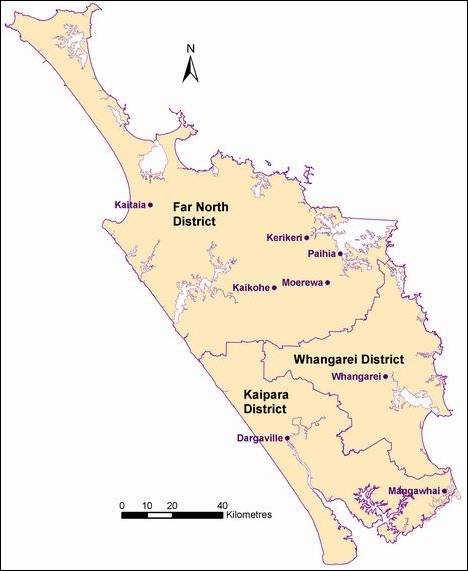
Northland is a long, narrow peninsula with a subtropical climate. It has a land area of 1.25 million hectares and a population of 148,470 (Statistics NZ 2006). Local government in the region includes Northland Regional Council and the Far North, Kaipara and Whangarei District Councils as shown in figure 1 (below).
Northland is a diverse region in both socio-economic patterns and environmental characteristics. Northland is renowned for its scenic and accessible coastline, sheltered harbours, many offshore islands and ecosystems of important conservation value. While Northland is currently undergoing significant growth particularly in eastern coastal environments, it remains a relatively poor and isolated region of New Zealand (NRC 2006).

Figure 1: Map of Northland region showing districts and main urban areas.
